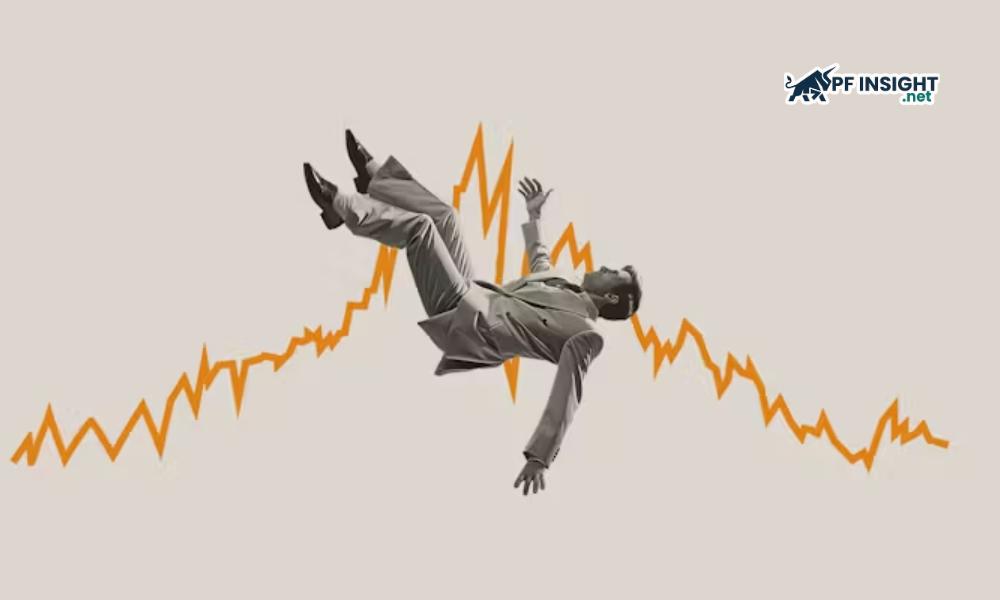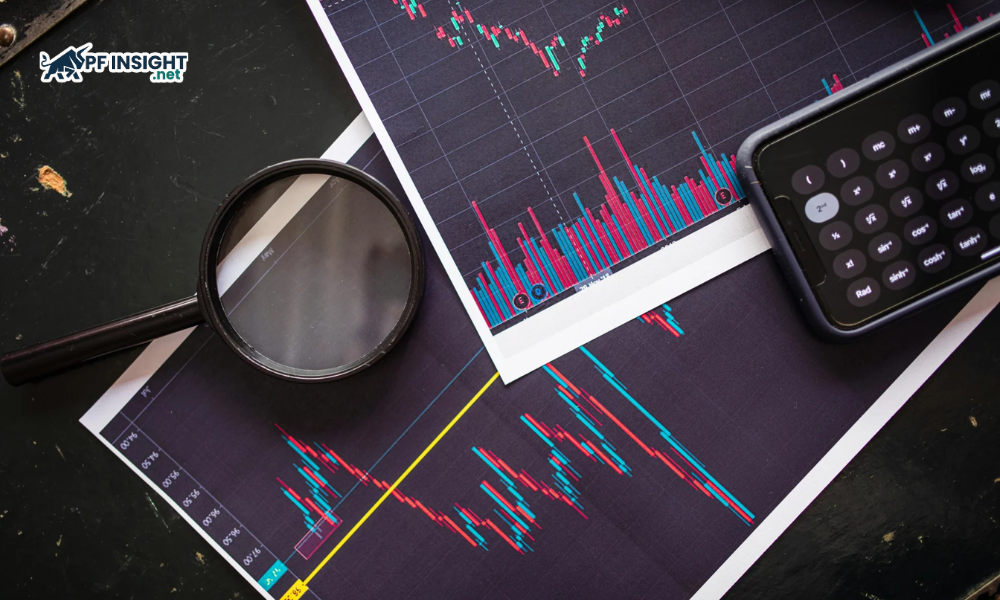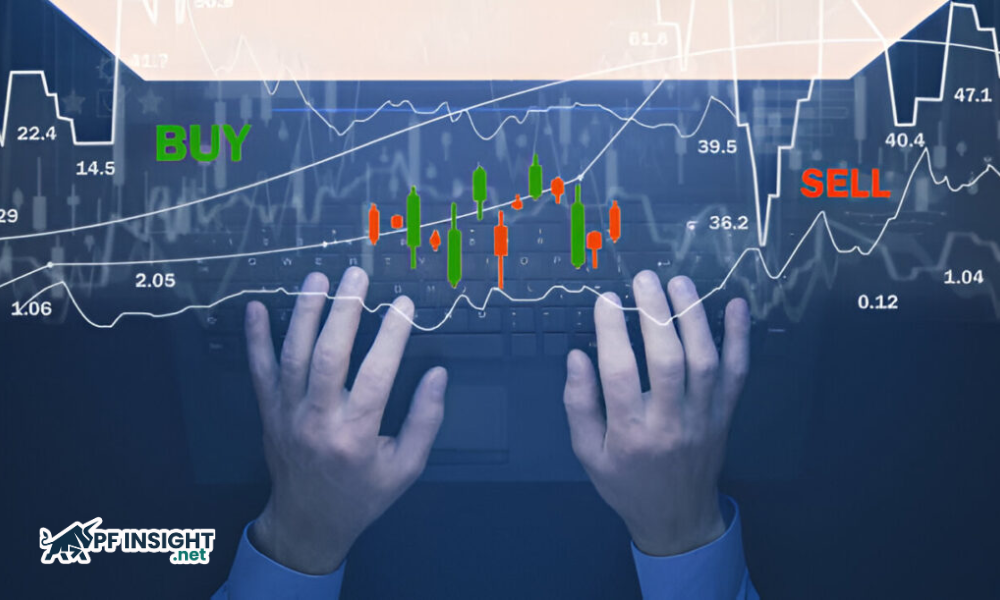Proprietary trading is an exciting industry with high profit potential, but also with unpredictable high risks. In this volatile environment where risks and profits always go hand in hand, drawdown rules become an important control tool. In this article, let’s learn about each type of drawdown, how to help traders manage risks effectively.
What is drawdown?
The term “drawdown” refers to the reduction of your account equity from its highest peak to its lowest trough over a specific period of time. It is an important indicator of the potential risk you may be exposed to. In other words, it represents the total amount of money you have lost from a series of unsuccessful trades. An important element of risk management is monitoring your drawdown, which will help you protect your account and maintain your trading skills over the long term.
Types of drawdown in proprietary trading
To understand how the drawdown rule works, you must understand the following concepts:

Maximum drawdown
Maximum Drawdown (MDD) shows the largest drawdown of an account over a specific period of time, from peak to trough. This indicator is used as a tool to evaluate the effectiveness of a trading and risk management strategy through the maximum loss percentage.
Daily drawdown
Daily drawdown is the largest decline a trader can experience in a single day, from peak to trough, before the market reaches a new high. It shows the maximum loss that can occur in a single trading session, even if that session ends in a profit. In contrast to a maximum drawdown, which occurs over many periods of time, even years, a daily drawdown is limited to a single trading session.
Drawdown high point
The highest point is used to measure the drawdown level, which can be the initial balance or the opening balance of the account. This number will vary depending on the type of drawdown. Determining the high point is important because it affects the drawdown rule in different situations.
Stop out level
The stop out level is understood as the lowest balance or equity that, when reached, the funded account will violate the drawdown rule. This threshold, which is considered the final, irrevocable limit, is set by calculating the High Point of the withdrawal level. The account will be closed immediately if this point is reached. Therefore, it is important to understand the stop loss level related to the withdrawal type.
Balance-based drawdown
Funded account balance is the total initial capital plus any profit or loss from closed positions. This is the remaining net amount that can be used to continue trading. Without taking into account short-term profits or losses from open positions, the drawdown based on the balance is calculated on closed trades in the account. This method provides flexibility, in case the trade may decline short-term before reversing and making a profit.
Formula for calculating balance-based drawdown:
Balance-based drawdown = Initial balance + Net P&L resulting from closed trades
Trailing drawdown
Trailing drawdown, also known as relative drawdown or smart drawdown, measures the largest drawdown of an account relative to its most recent peak. The indicator is updated for each new peak the account reaches. This allows traders to visually track the drawdown of their account over time and compare it to the peak it has reached.
Equity-based drawdown
When using the equity-based exit method, proprietary trading firms will consider the greater of the following two factors:
- Account balance (determined by the balance-based withdrawal method).
- Unrealized profit from open positions plus balance.
If Equity (Balance + Floating Profit) exceeds Balance, the highest Equity level will be used as the Highest Point when determining the Drawdown. Conversely, if it exceeds Equity, Balance is considered the Highest Point of Drawdown. Accordingly, raising capital becomes more difficult if the brokerage firm sets a withdrawal level based on equity as the maximum account value. The reason is that traders face a higher risk threshold because the withdrawal level is determined by floating profits.
Formula for calculating equity-based drawdown:
Equity-Based Drawdown = The Highest of Equity or Balance
Absolute drawdown
Absolute drawdown, sometimes referred to as static drawdown or fixed drawdown, quantifies the amount the account has depreciated from its initial balance. This indicator maintains the overall risk to your initial capital by maintaining a fixed stop loss threshold regardless of how much the account grows.
Formula for calculating absolute drawdown:
Absolute drawdown = Initial balance – Lowest balance
Why is the drawdown rule important for traders?

Risk management
However, proprietary trading has many potential risks besides great opportunities. To achieve stable profits, traders must focus on risk management. In particular, drawdown rules are an important foundation that contributes to account security and ensures the path to sustainable prosperity.
Every transaction is a risk and an investment that is assessed based on the company’s capital. Therefore, it is very important to protect this capital from unforeseen fluctuations. To ensure safety, drawdown rules set a separate threshold, when this threshold is exceeded, the account protection mechanism will be immediately activated.
These actions may include adjusting the portfolio or automatically terminating the trade. By using exit rules, businesses can avoid the “chasing losses” cycle, which occurs when traders try to recoup losses from a losing trade but accidentally add to the loss.
Furthermore, drawdown rules support consistency and discipline in trading. They serve as a reminder that strict adherence to predetermined risk limits is as important to success as strategy. This adherence helps maintain consistent performance whether the market is rising or falling and avoids losses due to a few losing trades.
Ensure stable profits
Any successful business requires consistency, and proprietary trading companies are no exception. The ultimate goal is to maintain a steady growth trend over time, despite the volatility inherent in trading.
To achieve this, drawdown rules are essential. A business can minimize the risk of losing capital during adverse market times by setting clear loss thresholds. This helps maintain sufficient resources to be ready to take advantage of profitable opportunities during more favorable times, in addition to maintaining short-term financial stability.
Furthermore, drawdown rules can be used as a tool to evaluate and improve trading strategies. The company should review, adjust and improve the implemented strategy if a method consistently leads to the account reaching the withdrawal limit.
Maintain long-term reputation
Reputation is considered an intangible asset in the financial industry that has a significant impact on actual results. Customers, partners and investors all have high expectations and trust in proprietary trading firms. That trust is built on the stability and risk management of the firm, in addition to its ability to generate profits.
Drawdown rules serve as a firm’s firm commitment to responsible risk management for its clients. On the other hand, large drawdowns can be cause for concern, especially if they occur frequently. They can be interpreted as a sign of reckless trading, poor strategy, or lack of control.
This can strain relationships with financial institutions and adversely affect creditworthiness, while discouraging potential investors. On the other hand, a company that is known for strictly applying and adhering to drawdown rules will be seen as a trustworthy entity. This reflects professionalism, responsibility and long-term thinking – factors that are always highly appreciated by stakeholders.
Guide for traders to set up effective drawdown rules
Consider the market, trader skills

There is no one-size-fits-all approach to building a successful drawdown rule. Every proprietary trading firm is different, from its operating strategy to its capital size, and needs to be tailored accordingly. However, there are a few basic elements that every business should consider when setting up:
- Market Volatility: Each financial instrument and market has its own volatility characteristics. For example, a business focused on more stable markets, such as the bond market, will need to set different exit thresholds than a business operating in extremely volatile markets, such as cryptocurrencies.
- Trading Experience: Experienced traders often have more flexibility than beginners. An experienced trader, who has demonstrated the ability to overcome losses and recover effectively, often has the opportunity to be granted a higher drawdown.
- Company Risk Tolerance: Every business has its own risk tolerance. While some businesses prioritize capital preservation over rapid growth, others are willing to take large capital losses in pursuit of aggressive growth.
- Portfolio diversification: Compared to a portfolio that is overly concentrated in a small number of financial instruments, a portfolio that is properly allocated across a wide range of assets will reduce overall risk and be able to withstand larger drawdowns.
Implement risk management strategy
Creating drawdown rules is just the first step, but strictly enforcing them is equally important. Modern technology allows businesses to monitor and ensure compliance with these regulations in real time.
- Automatic Notifications: When drawdowns reach or exceed pre-defined drawdown rules, the platform can be set to automatically notify traders and management.
- Automatic Liquidation: When the decline reaches the preset danger threshold, the system will proactively close the entire position in high-risk situations to protect the company’s capital.
- Performance Evaluation: Analytical tools support trading strategy adjustment and trader skill enhancement by providing comprehensive data on reasons for drawdown along with alerts.
Flexible in drawdown

It is important to strike a balance between rigidity and adaptability. While the primary goal of drawdown rules is to protect company capital, overly strict rules can stifle traders’ initiative and flexibility in decision-making.
- Threshold approach: A business can set multiple control points instead of just one withdrawal threshold. For example, a 10% drop would trigger a review, a 15% threshold could restrict some trading activity, and a 20% threshold would result in a complete stop.
- Flexible adjustment based on circumstances: In certain circumstances such as high volatility due to geopolitical events or significant changes in financial policies, which may increase short-term market risks, the withdrawal limit may be adjusted.
- Regular Review: As the trading market is constantly changing, the drawdown rule must be reviewed and modified according to the strategy, goals or market circumstances to ensure its suitability and effectiveness.
Using risk tools
Providing traders with effective tools and techniques to manage drawdowns can help them make smart trading decisions.
- Diversify Risk: By minimizing significant losses in one asset and maximizing gains from other assets, risk diversification helps traders understand the advantages of building a diversified portfolio.
- Position Size Management: To control losses by emphasizing to traders the importance of choosing the right position size.
- Stress test: Performing simulated scenarios with large losses helps traders practice their psychology and coping skills, thereby improving their ability to handle real loss situations.
- Apply stop-loss wisely: This important tool protects accounts and minimizes unnecessary risks by helping traders automatically exit orders when the loss reaches a pre-set threshold.
Building a drawdown rule requires a combination of discipline, long-term planning, and the ability to adapt to volatility. By maintaining a balance toward profit optimization, this hedging strategy helps businesses maintain an edge in a trading environment that is both risky and potentially profitable. Well-constructed drawdown rules not only help preserve capital, but also enhance stakeholder confidence and provide traders with clear guidance, laying the foundation for successful and long-term growth of a business in the financial sector.
Conclusion
Brokerage drawdown rules are designed to help you stay in the long run and demonstrate your trading prowess and consistency, not to make it difficult for traders. Knowing how to calculate drawdown, control position size, and maintain discipline under pressure can help you protect your funded account and trade more safely.







